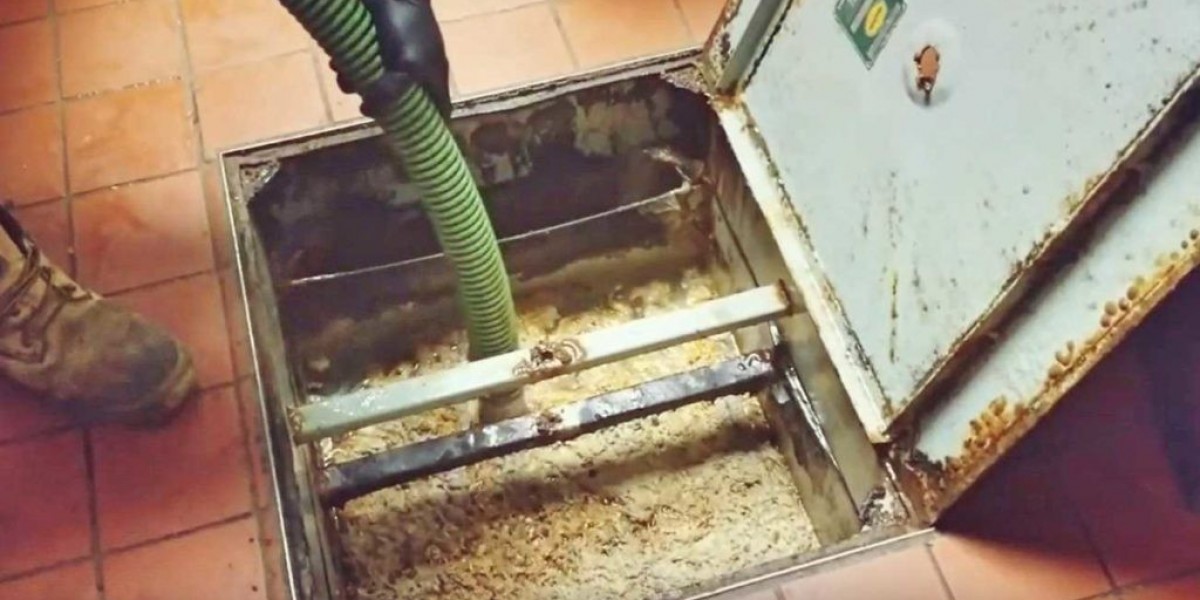Running a successful restaurant involves more than just serving delicious food and providing excellent customer service. Behind the scenes, maintaining a clean and functional kitchen is crucial to the overall operation. One often-overlooked but essential component of kitchen maintenance is restaurant grease trap cleaning. Regular grease trap maintenance not only ensures the smooth operation of your plumbing system but also helps you comply with local health and environmental regulations.
What is a Grease Trap?
A grease trap, also known as a grease interceptor, is a plumbing device designed to capture fats, oils, and grease (FOG) from wastewater before it enters the sewer system. These substances can solidify and cause blockages in pipes, leading to costly repairs and potential health hazards. Grease traps are typically installed in commercial kitchens, including restaurants, cafeterias, and food processing facilities.
Why is Grease Trap Cleaning Important?
- Prevents Blockages and Backups
Over time, FOG accumulates in the grease trap, reducing its efficiency. If not cleaned regularly, the trapped grease can harden and cause blockages in your plumbing system. This can lead to unpleasant backups, foul odors, and even kitchen downtime, which can disrupt your business operations. - Ensures Compliance with Regulations
Local health and environmental agencies have strict regulations regarding grease trap maintenance. Regular cleaning and proper disposal of grease are mandatory to avoid fines, penalties, or even closure of your establishment. Keeping your grease trap in good condition demonstrates your commitment to environmental responsibility. - Protects the Environment
When FOG enters the sewer system, it can cause significant damage to public wastewater infrastructure. It can also contaminate local water sources, harming aquatic life and ecosystems. Proper grease trap maintenance helps prevent these environmental issues. - Maintains Kitchen Hygiene
A clogged or overflowing grease trap can lead to unsanitary conditions in your kitchen. Regular cleaning ensures a clean and safe working environment for your staff, reducing the risk of pest infestations and food contamination.
How Often Should You Clean Your Grease Trap?
The frequency of grease trap cleaning depends on the size of your trap and the volume of FOG your kitchen produces. Most restaurants require cleaning every 1 to 3 months, but high-volume kitchens may need more frequent service. Signs that your grease trap needs cleaning include:
- Slow-draining sinks
- Foul odors coming from drains
- Visible grease buildup in the trap
Professional Grease Trap Cleaning Services
While some restaurant owners attempt to clean grease traps themselves, hiring a professional service is highly recommended. Professional cleaners have the expertise, tools, and equipment to thoroughly clean and maintain your grease trap, ensuring it operates efficiently. Here’s what you can expect from a professional service:
- Inspection
Technicians will inspect your grease trap to assess its condition and determine the level of cleaning required. - Pumping and Cleaning
Using specialized equipment, they will pump out the accumulated grease, sludge, and wastewater, leaving your trap clean and functional. - Proper Disposal
The collected waste is disposed of in compliance with local regulations, ensuring environmentally responsible practices. - Maintenance Tips
Professionals can provide advice on how to reduce FOG buildup and extend the time between cleanings.
Tips to Reduce Grease Trap Maintenance
- Scrape Plates Thoroughly: Ensure that food scraps and grease are scraped into the trash before washing dishes.
- Use Strainers: Install strainers in sinks to catch food particles and prevent them from entering the drain.
- Train Staff: Educate your kitchen staff on best practices for minimizing FOG discharge.
- Schedule Regular Cleanings: Stick to a consistent cleaning schedule to prevent buildup and avoid emergencies.
Conclusion
Regular grease trap cleaning is a critical aspect of restaurant maintenance that should never be overlooked. By keeping your grease trap in optimal condition, you can prevent costly plumbing issues, maintain a clean and safe kitchen environment, and stay compliant with local regulations. Partnering with a professional cleaning service ensures that your grease trap is properly maintained, allowing you to focus on what you do best—serving great food to your customers.
Don’t wait for a plumbing disaster to strike. Schedule your next grease trap cleaning today and keep your restaurant running smoothly!








